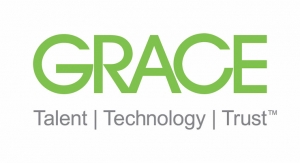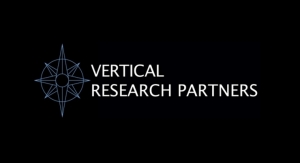07.22.18
Chemicals
Pension Tension 2018; A Brief Update on Funded Status
• We’ve updated our pension funding work. Now that 10-Ks are all out, we have reviewed the reports to update our work on the funded status of pension plans across the US chemicals sector. Our analysis reveals three pieces of good news. First, among chemical companies in our coverage, the cumulative pension funding deficit declined by 20% in 2017. Second, pension deficits as a percent of enterprise value declined by 120bps to an average of 3.9%, aided by rising equity markets. Third, recent increases in interest rates and prospects for three or perhaps four additional Fed actions in 2018 could result in upward revisions to discount rates and lower pension obligations (all else held constant) in the years to come.
• Most improved award: Huntsman (HUN) and Celanese (CE). Based on improvements in funded status, our analysis suggests that Huntsman Corporation and Celanese enjoyed the greatest pension-linked increase in shareholder value at +3.1% and +2.0% of equity value, respectively, on an after-tax basis. As a reminder, Huntsman was able to...
• Funding gaps widened at WR Grace (GRA). Our analysis suggests that WR Grace suffered the greatest pension-linked erosion of shareholder value at -1.3% of equity value. Grace’s PBO now represents 8.1% of the company’s current enterprise value, up from 6.7% last year. This new level now represents the…
• Pension funding improves with an absolute decline in the average deficit. With the exception of Sherwin-Williams, all of our companies under coverage have under-funded pension obligations. As of fiscal year-end 2017, pension plans among companies in our coverage were 78% funded on a weighted-average basis with a median funding ratio of 80%. Figure 3 plots funded status as a…
• We continue to favor leverage in the form of pension obligations. All else equal, we’d prefer to see plans that are well funded in order to avoid risk of those plans siphoning future cash flows that could otherwise accrue to the benefit of shareholders. Since October 2016 however, we have viewed pension deficits as a positive from a…
• Pension deficits skew valuation slightly. As shown in Figure 6, the inclusion of updated pension deficits in our calculation of enterprise value (EV) would increase the average ratio of EV to our 2018 EBITDA estimate by 0.3x to 10.4x from 10.1x. For two of our more under-funded companies in our coverage…
• Overall, we remain Market Weight on US Chemicals exposure, albeit with a healthy appetite for risk. Based on 10-year average data, we consider the US chemicals sector to be overvalued by 10% on an absolute basis, and modestly undervalued relative to the S&P500 index. The average stock of our 18 names now under coverage trades for 16.2x our estimate of 2018 EPS. This compares to a 10-year average P/E multiple of next twelve months (NTM) earnings of 14.0x for Vertical Research Partners’ index of 25 chemical stocks. Likewise, the average stock of our names now under coverage trades for 9.9x our estimate of 2018 EBITDA. This compares to a 10-year average multiple of next twelve months (NTM) EBITDA of 7.9x for the VRP Chemicals Index. The picture doesn’t look nearly as grim when we compare the sector valuation to that of the broader market. Using the VRP Chemicals Index as a proxy, the sector trades at a relative P/E multiple of 0.91x that of the S&P500 index’s P/E multiple, which is below the 10-year average relative P/E multiple of 0.98x. Likewise, the sector trades at a relative EBITDA multiple of 0.85x that of the S&P500 index’s EBITDA multiple, which is also a modest discount to the 10-year average relative EBITDA multiple of 0.91x. Within the sector, our analysis suggests that commodity-linked chemical names – whether pure plays or diversified portfolios – remain inexpensive vs. specialty chemical counterparts on a 5-year and a 10-year historical basis.
(Please see full report for details)
Pension Tension 2018; A Brief Update on Funded Status
• We’ve updated our pension funding work. Now that 10-Ks are all out, we have reviewed the reports to update our work on the funded status of pension plans across the US chemicals sector. Our analysis reveals three pieces of good news. First, among chemical companies in our coverage, the cumulative pension funding deficit declined by 20% in 2017. Second, pension deficits as a percent of enterprise value declined by 120bps to an average of 3.9%, aided by rising equity markets. Third, recent increases in interest rates and prospects for three or perhaps four additional Fed actions in 2018 could result in upward revisions to discount rates and lower pension obligations (all else held constant) in the years to come.
• Most improved award: Huntsman (HUN) and Celanese (CE). Based on improvements in funded status, our analysis suggests that Huntsman Corporation and Celanese enjoyed the greatest pension-linked increase in shareholder value at +3.1% and +2.0% of equity value, respectively, on an after-tax basis. As a reminder, Huntsman was able to...
• Funding gaps widened at WR Grace (GRA). Our analysis suggests that WR Grace suffered the greatest pension-linked erosion of shareholder value at -1.3% of equity value. Grace’s PBO now represents 8.1% of the company’s current enterprise value, up from 6.7% last year. This new level now represents the…
• Pension funding improves with an absolute decline in the average deficit. With the exception of Sherwin-Williams, all of our companies under coverage have under-funded pension obligations. As of fiscal year-end 2017, pension plans among companies in our coverage were 78% funded on a weighted-average basis with a median funding ratio of 80%. Figure 3 plots funded status as a…
• We continue to favor leverage in the form of pension obligations. All else equal, we’d prefer to see plans that are well funded in order to avoid risk of those plans siphoning future cash flows that could otherwise accrue to the benefit of shareholders. Since October 2016 however, we have viewed pension deficits as a positive from a…
• Pension deficits skew valuation slightly. As shown in Figure 6, the inclusion of updated pension deficits in our calculation of enterprise value (EV) would increase the average ratio of EV to our 2018 EBITDA estimate by 0.3x to 10.4x from 10.1x. For two of our more under-funded companies in our coverage…
• Overall, we remain Market Weight on US Chemicals exposure, albeit with a healthy appetite for risk. Based on 10-year average data, we consider the US chemicals sector to be overvalued by 10% on an absolute basis, and modestly undervalued relative to the S&P500 index. The average stock of our 18 names now under coverage trades for 16.2x our estimate of 2018 EPS. This compares to a 10-year average P/E multiple of next twelve months (NTM) earnings of 14.0x for Vertical Research Partners’ index of 25 chemical stocks. Likewise, the average stock of our names now under coverage trades for 9.9x our estimate of 2018 EBITDA. This compares to a 10-year average multiple of next twelve months (NTM) EBITDA of 7.9x for the VRP Chemicals Index. The picture doesn’t look nearly as grim when we compare the sector valuation to that of the broader market. Using the VRP Chemicals Index as a proxy, the sector trades at a relative P/E multiple of 0.91x that of the S&P500 index’s P/E multiple, which is below the 10-year average relative P/E multiple of 0.98x. Likewise, the sector trades at a relative EBITDA multiple of 0.85x that of the S&P500 index’s EBITDA multiple, which is also a modest discount to the 10-year average relative EBITDA multiple of 0.91x. Within the sector, our analysis suggests that commodity-linked chemical names – whether pure plays or diversified portfolios – remain inexpensive vs. specialty chemical counterparts on a 5-year and a 10-year historical basis.
(Please see full report for details)

















